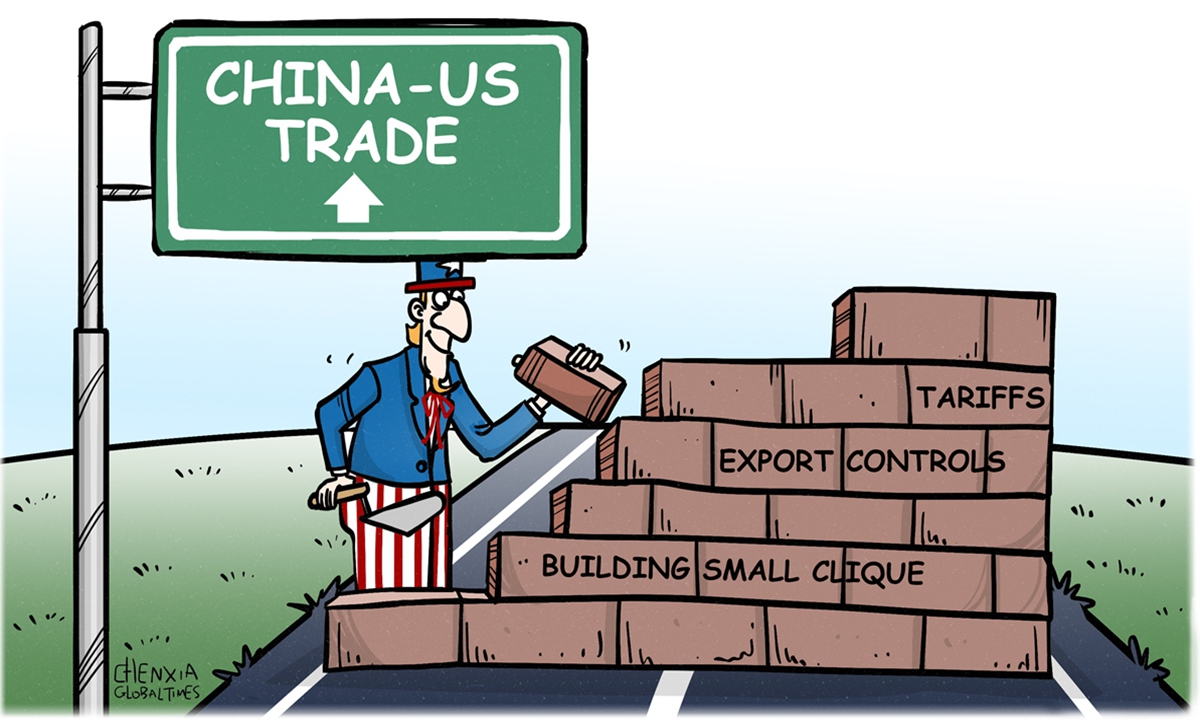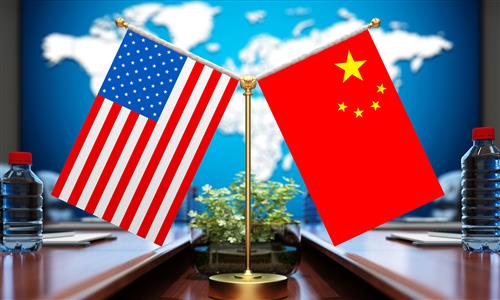
Illustration: Chen Xia/Global Times
"Why China Is Starting a New Trade War" - The Wall Street Journal (WSJ) recently published a subpar article with this sensational headline. It starts from stating that China hopes to restore economic vitality through increased investment in manufacturing, suggesting that this will squeeze businesses around the world and raise the specter of a new global trade war. This viewpoint is hardly new, merely recycling the old argument of "overcapacity." However, WSJ has attached the provocative "global trade war" label to attract attention and generate buzz.
According to WSJ's twisted logic, China is "guilty" of opening-up, while the US' protectionist policies are seen as "justified." The article also offers guidance, suggesting that China's economy needs "a fundamental rethink, graduating from its traditional heavy reliance on manufacturing and construction and instead putting greater priority on domestic consumption - a shift that would make China more like the US, and potentially put it on a more stable growth path."
It is unclear what WSJ expects China to learn from the US. Should China adopt discriminatory subsidy policies like those in the Inflation Reduction Act? Or follow the US in obstructing World Trade Organization (WTO) appellate body judge appointments? Or impose a 100 percent tariff on Chinese electric vehicles that are barely exported to the US? When WSJ sets the US as the "standard" for other countries, does it ever look at itself in the mirror?
The progress and development of China's manufacturing industry is no accident. Since 2000, China's investment in research and development has grown at an average annual rate of 14.2 precent, four times that of the US. For 15 consecutive years, China's share of global goods trade exports has remained the highest in the world and, as the largest global exporter, has also maintained the second position in goods trade imports for the same period.
In international trade, which operates within a globalized and market-driven environment, export performance fundamentally depends on comparative advantage and is also influenced by external demand. As a financial media outlet with a long-term focus on the Chinese economy, WSJ is not unaware of these facts about China's manufacturing sector, yet chooses to ignore them.
With its instances of distortion and deliberate spread of incorrect viewpoints, WSJ is not only falling short in terms of professional standards, but also seems to have ulterior motives. This year, WSJ has repeatedly published pessimistic articles about the Chinese economy. In the current US attack on China's so-called overcapacity, WSJ has played an ignoble role as a "mouthpiece," serving mainly to provide a pretext for US trade protectionism and economic nationalism, and to mobilize public opinion for the US government's efforts to suppress and curb China's new energy industry.
However, when it comes to who has sparked concerns over a new round of global trade wars, no country seems to be doing more than the US. In 2023, the number of technical regulations issued by the members of the WTO reached more than 4,000, with the US alone accounting for 454 of them, more than the combined total of the five members that followed it. According to a monitoring report released by the WTO in July this year, despite pressure from protectionism, most members have actively promoted trade in goods, reduced or eliminated import tariffs, and abolished or relaxed import quantity restrictions, with trade facilitation measures outnumbering trade restrictive measures. The WTO sees this as an important signal of the members' commitment to keep trade flowing. Furthermore, it shows that members are using the WTO and other mechanisms to find ways to resolve disputes. These conclusions clearly indicate that the world depicted by The Wall Street Journal, one filled with trade friction, is fictional. The tide of globalization has not changed; it is the US that has reversed course.
China's manufacturing development does not harm other countries; it is US protectionism that is doing so. Free trade, built on the foundation of specialized divisions of labor, allows countries to fully leverage their comparative advantages, maximizing the welfare of all trading partners. Protectionism, on the other hand, often leads to high inflation, reduced production efficiency, and increased costs of production and living. Companies shielded by trade barriers lose the incentive for technological innovation and cost optimization. Without better products and services, market demand cannot be stimulated, which in turn further drags down businesses.
We have noticed that WSJ's article fails to mention the WTO even once, and previous related articles have also rarely mentioned it. With global trade having reached its current scale, some localized friction is inevitable, but the key is to resolve these issues through WTO rules and mechanisms. Neither WSJ nor Washington has the right to bypass the WTO and besmirch other countries.
In the first seven months of this year, China's import and export scale reached a record high, while non-financial outbound direct investment grew by 16.2 percent year-on-year. This is mainly due to China's proactive policy of opening-up. Some US media outlets claimed that a decline in Chinese exports "threatens the world" one month, and the next month, claimed that a rise in Chinese exports "threatens the world." If they haven't personally felt the benefits of Chinese imports, exports and investments, it's a result of their own mentality and government policies. They need to engage in self-reflection, rather than shifting the blame onto others.

